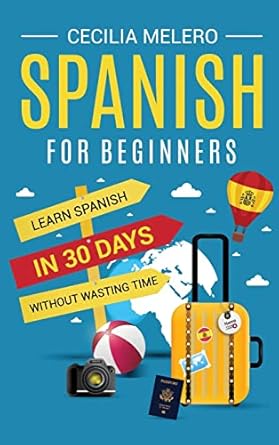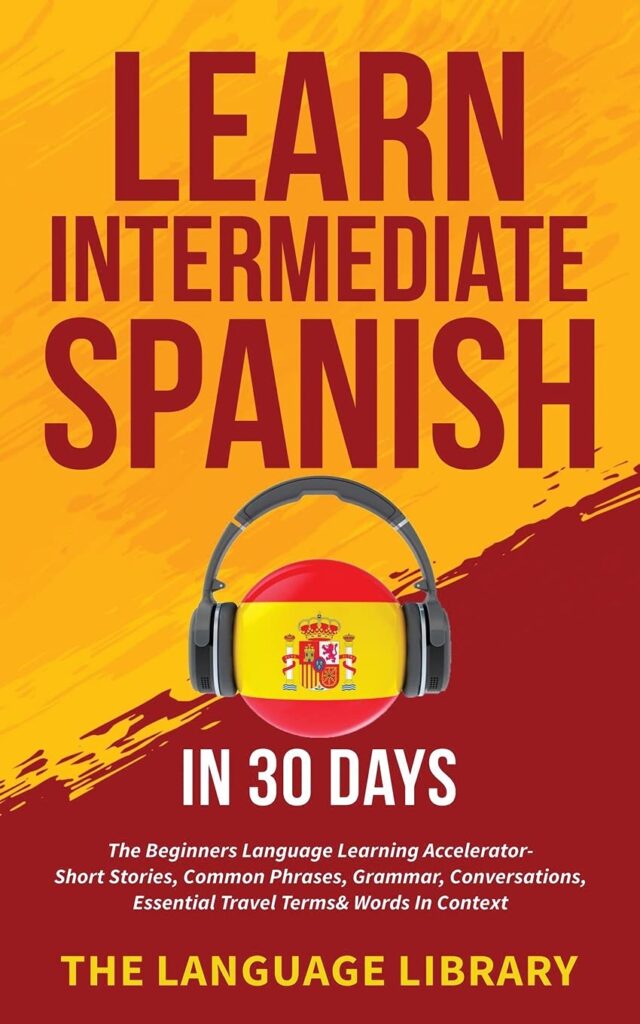
Introduction:
Imagine being able to travel through Spain or Latin America and engage in conversations with locals, fully immersing yourself in the rich tapestry of Spanish culture. Or picture adding a highly valuable skill to your resume that sets you apart in the global job market. Learning Spanish is not just about mastering a language; it’s about opening doors to new experiences, opportunities, and connections. Let’s dive into why and how you should embark on this exciting journey.
Table of Contents
Why Learn Spanish?:
- Fascinating Facts about Spanish:
- Spanish is the second most spoken language in the world by native speakers, with over 460 million people speaking it as their first language.
- It is the official language in 21 countries, including Spain, Mexico, and much of Central and South America.
- Spanish is one of the six official languages of the United Nations.
- Benefits of Learning Spanish:
- Career Opportunities: Bilingual employees are highly valued in global businesses, education, healthcare, and many other fields. Learning Spanish can significantly enhance your employability and career prospects.
- Travel: Imagine traveling through Spanish-speaking countries and connecting with locals, understanding their culture, and experiencing their traditions firsthand.
- Cultural Enrichment: Learning Spanish allows you to enjoy Spanish literature, music, films, and art in their original form, offering a deeper understanding and appreciation of Hispanic culture.
- Cognitive Benefits: Studies have shown that learning a new language can improve memory, problem-solving skills, and even delay the onset of dementia.
Introduction to Spanish:
- Brief Overview of the Language’s Origin:
- Spanish, also known as Castilian, originated in the Castile region of Spain. It evolved from Latin, the language of the Romans, who colonized the Iberian Peninsula over 2,000 years ago.
- Over the centuries, Spanish absorbed influences from Arabic, due to the Moorish occupation of Spain, as well as indigenous languages in the Americas after the Spanish conquests.
- Key Demographics and Regions Where It Is Spoken:
- Spanish is the official language in 21 countries, primarily in Latin America, Spain, and parts of the Caribbean.
- It is also widely spoken in the United States, where it is the second most common language after English, with over 41 million native speakers.
- Inspiration to Learn Spanish:
- Personal Growth: Learning Spanish opens up a whole new world of personal enrichment. You can read classic literature by Cervantes, enjoy the passionate rhythms of flamenco, or delve into the magical realism of Latin American authors like Gabriel Garcia Marquez.
- Professional Growth: In a globalized world, Spanish is a key asset. Whether you’re in international business, diplomacy, or social services, speaking Spanish can provide a significant competitive edge.
- Cultural Connection: Understanding and speaking Spanish allows you to connect with a diverse range of people, fostering deeper intercultural understanding and relationships.
A Highly Effective But Less Known Scientific Method: The Interleaved Practice Technique
you’ve set out on a journey to master Spanish, but traditional methods of rote memorization and repetitive practice just aren’t cutting it. You’re not alone—many language learners face the same challenge. What if there was a scientifically proven method to enhance your learning and make it more effective? Enter the Interleaved Practice Technique, a game-changer for anyone looking to learn Spanish or any other skill. This technique not only makes learning more efficient but also keeps it engaging and fun.
What is the Interleaved Practice Technique?
Interleaved practice, sometimes referred to as interleaving, involves mixing different topics or forms of practice within a single study session rather than focusing on one subject for an extended period. This approach contrasts with blocked practice, where you concentrate on one type of material at a time. Interleaving has been shown to improve long-term retention and understanding by forcing your brain to continually retrieve and apply information in different contexts.
Why Interleaved Practice Works:
- Enhanced Memory Retention:
- By regularly switching between topics, you create a more challenging learning environment for your brain. This process helps reinforce the material and enhances memory retention over time.
- For example, instead of spending an hour solely on vocabulary, you might spend 20 minutes on vocabulary, 20 minutes on grammar, and 20 minutes on listening skills.
- Improved Problem-Solving Skills:
- Interleaving encourages your brain to engage in more active problem-solving as you constantly adapt to new tasks. This can lead to better critical thinking and application of knowledge in real-world situations.
- When learning Spanish, alternating between different types of exercises—like conjugating verbs, forming sentences, and understanding cultural contexts—keeps your brain agile and adaptable.
- Greater Transfer of Learning:
- By practicing different skills in various contexts, you enhance your ability to transfer what you’ve learned to new situations. This is particularly beneficial in language learning, where you need to apply vocabulary and grammar in diverse conversations.
- For instance, practicing speaking with a language partner, writing in a journal, and listening to Spanish podcasts all in one session can help you integrate your learning more seamlessly.
Step-by-Step Guide to Using Interleaved Practice for Learning Spanish:
Step 1: Understand the Basics
Before diving into interleaved practice, it’s important to have a basic understanding of Spanish. Familiarize yourself with fundamental concepts such as:
- Spanish Alphabet and Pronunciation: Learn the sounds of each letter and practice pronunciation.
- Basic Vocabulary: Start with common words and phrases used in everyday conversation.
- Simple Grammar Rules: Understand the basics of verb conjugations, gender, and sentence structure.
Step 2: Set Clear Goals
Define what you want to achieve and by when. Clear goals will guide your learning process and help you measure progress. Examples include:
- Being able to hold a basic conversation within three months.
- Mastering 1000 new vocabulary words in six months.
- Achieving fluency within two years.
Step 3: Create a Study Schedule
Plan your study sessions to include different types of activities. Here’s a sample schedule:
- Day 1:
- 20 minutes of vocabulary practice (using flashcards or apps like Anki).
- 20 minutes of grammar exercises (focus on verb conjugations).
- 20 minutes of listening to a Spanish podcast.
- Day 2:
- 20 minutes of reading a Spanish article or story.
- 20 minutes of speaking practice with a language partner.
- 20 minutes of writing a short essay or journal entry in Spanish.
Step 4: Use a Variety of Resources
Diversify your study materials to keep sessions engaging and challenging. Some useful resources include:
- Textbooks and Workbooks: For structured grammar and vocabulary lessons.
- Online Courses: Platforms like Duolingo, Coursera, and Babbel offer interactive lessons.
- Language Apps: Apps like Memrise and Rosetta Stone provide gamified learning experiences.
- Multimedia Resources: Spanish films, TV shows, music, and podcasts for immersive learning.
Step 5: Regular Review and Feedback
Consistent review and feedback are crucial for reinforcing what you’ve learned. Use self-tests, quizzes, and language exchange partners to evaluate your progress. Here are some strategies:
- Weekly Quizzes: Create or find quizzes that test your knowledge of vocabulary, grammar, and comprehension.
- Language Exchange: Partner with a native Spanish speaker to practice conversation and receive real-time feedback.
- Self-Assessment: Regularly review your notes and track your progress against your goals.
Step 6: Stay Consistent
Consistency is key to the effectiveness of interleaved practice. Make sure to stick to your study schedule and incorporate this technique regularly. Even on busy days, try to fit in at least 30 minutes of interleaved practice.
Applying Interleaved Practice: Practical Examples
Example 1: Learning Verb Conjugations
- Session 1:
- 10 minutes on conjugating the verb “ser” (to be) in the present tense.
- 10 minutes on conjugating the verb “estar” (to be in a temporary state) in the past tense.
- 10 minutes on practicing sentences using both “ser” and “estar”.
- Session 2:
- 10 minutes on conjugating “tener” (to have) in the future tense.
- 10 minutes on conjugating “ir” (to go) in the past tense.
- 10 minutes on practicing sentences using “tener” and “ir”.
Example 2: Expanding Vocabulary
- Session 1:
- 5 minutes on learning 10 new adjectives.
- 5 minutes on learning 10 new verbs.
- 5 minutes on learning 10 new nouns.
- 5 minutes on using new words in sentences.
- Session 2:
- 5 minutes on reviewing the previous session’s vocabulary.
- 10 minutes on learning 20 new words (mixed categories).
- 5 minutes on practicing sentences with new words.
Example 3: Improving Listening Skills
- Session 1:
- 15 minutes listening to a Spanish song and noting down new words.
- 15 minutes listening to a Spanish news segment and summarizing it in Spanish.
- Session 2:
- 15 minutes listening to a Spanish podcast conversation.
- 15 minutes watching a Spanish TV show episode and discussing it with a language partner.


Incorporating Fun into Interleaved Practice:
Learning a new language doesn’t have to be tedious. Here are some fun ways to incorporate interleaved practice:
Gamify Your Learning
- Language Apps: Use apps like Duolingo and Memrise, which offer gamified learning experiences with points, levels, and rewards.
- Flashcard Games: Create flashcard games with friends or family members to make vocabulary practice more engaging.
Cultural Immersion
- Cooking Recipes: Try cooking Spanish dishes and follow recipes in Spanish. This way, you learn culinary vocabulary and enjoy delicious food.
- Virtual Tours: Take virtual tours of Spanish-speaking countries and learn about their culture and history in Spanish.
Creative Expression
- Sketching and Language Learning: Combine your love for sketching with language practice. Draw scenes or objects and label them in Spanish.
- Writing Stories: Write short stories or comics in Spanish. This helps with vocabulary, grammar, and creative expression.
Social Interaction
- Language Meetups: Join local or virtual Spanish language meetups to practice speaking with others.
- Online Communities: Participate in forums and social media groups dedicated to Spanish learners.
Also Read: Learning from the life on Famous and Inspirational People
Learn Spanish for free – Actionable Steps, Tools, and Resources:
Now that you’re inspired and equipped with an effective learning method, let’s look at some practical steps and resources that can help you on your journey.
- Set Clear Goals:
- Define what you want to achieve and by when. Whether it’s being able to hold a basic conversation, travel comfortably, or achieve fluency, having clear goals will keep you motivated.
- Example: Set a goal to learn 50 new vocabulary words each week and practice them in sentences.
- Immerse Yourself in the Language:
- Surround yourself with Spanish as much as possible. Change the language settings on your devices to Spanish, listen to Spanish music, and watch Spanish films and TV shows.
- Example: Start your day by listening to a Spanish radio station during breakfast.
- Enroll in Online Spanish Courses:
- Platforms like Coursera, Duolingo, and Babbel offer structured courses that cater to different levels, from beginners to advanced learners.
- Example: Enroll in Duolingo’s Spanish course and commit to daily lessons to build a strong foundation.
- Use Language Learning Apps:
- Apps like Duolingo, Memrise, and Rosetta Stone provide interactive and gamified ways to learn vocabulary and grammar.
- Example: Use Memrise to learn new vocabulary through spaced repetition and interactive games.
- Practice Speaking:
- Use platforms like Tandem, HelloTalk, and italki to find language exchange partners or tutors. Regular speaking practice is crucial for fluency.
- Example: Schedule weekly sessions with a Spanish tutor on italki to practice conversational skills.
- Learn Spanish Vocabulary:
- Focus on learning the most common words and phrases first. Use flashcards, apps, or even sticky notes around your house to build your vocabulary.
- Example: Use Anki flashcards to review and memorize 10 new Spanish words each day.
- Understand Spanish Grammar:
- Resources like “Practice Makes Perfect: Complete Spanish Grammar” can be invaluable. Focus on the basics first, such as verb conjugations, gender, and articles.
- Example: Dedicate 30 minutes each day to studying Spanish grammar rules and practicing exercises.
- Read in Spanish:
- Start with children’s books or graded readers and gradually move to more complex texts. Reading helps improve comprehension and vocabulary.
- Example: Begin with “La Casa de los Espíritus” by Isabel Allende and highlight new words to look up.
- Write in Spanish:
- Keep a journal, write essays, or even try your hand at creative writing. Writing reinforces what you’ve learned and helps with grammar and syntax.
- Example: Write a daily journal entry in Spanish about your experiences and feelings.
- Listen to Spanish Podcasts:
- Podcasts like “Coffee Break Spanish” and “Notes in Spanish” offer lessons and insights at various levels.
- Example: Listen to “Coffee Break Spanish” during your commute and repeat key phrases out loud.
- Watch Spanish Movies and Series:
- Use subtitles initially and try to watch without them as you progress. Shows like “La Casa de Papel” (Money Heist) are both entertaining and educational.
- Example: Watch “La Casa de Papel” with Spanish subtitles to enhance your listening and reading skills simultaneously.
- Join Spanish Learning Communities:
- Participate in forums like Reddit’s r/Spanish or language learning groups on Facebook to share tips, resources, and motivation.
- Example: Join a Facebook group dedicated to Spanish learners and engage in discussions and challenges.
- Attend Language Meetups:
- Look for local language exchange meetups or virtual meetups where you can practice speaking with others.
- Example: Attend a local Spanish language meetup to practice speaking in a social setting.
- Use Spanish Learning Websites:
- Websites like SpanishDict, StudySpanish.com, and FluentU offer comprehensive resources including lessons, quizzes, and interactive activities.
- Example: Use SpanishDict to look up words, conjugate verbs, and practice grammar exercises.
- Practice Pronunciation:
- Focus on sounds that are different from your native language. Use resources like Forvo to hear native pronunciations.
- Example: Use Forvo to listen to native speakers pronounce difficult words and practice mimicking them.
- Take Advantage of Free Resources:
- The internet is full of free resources such as YouTube channels (e.g., Butterfly Spanish, SpanishPod101) and educational blogs.
- Example: Follow Butterfly Spanish on YouTube for free lessons on grammar, vocabulary, and pronunciation.
- Travel to Spanish-Speaking Countries:
- Immersing yourself in a Spanish-speaking environment is one of the best ways to learn. Travel, if possible, to practice your skills in real-life situations.
- Example: Plan a trip to Spain or Mexico and immerse yourself in the language by interacting with locals.
- Use Flashcards:
- Tools like Anki or Quizlet help in memorizing vocabulary and key phrases through spaced repetition.
- Example: Create a set of flashcards on Quizlet for common Spanish verbs and review them daily.
- Create a Study Schedule:
- Consistency is key. Set aside regular time each day for studying and practicing Spanish.
- Example: Allocate 30 minutes every morning for vocabulary practice and 30 minutes every evening for grammar exercises.
- Stay Motivated:
- Keep reminding yourself of your goals and celebrate your progress, no matter how small. Motivation can be sustained by tracking your progress and rewarding yourself.
- Example: Reward yourself with a Spanish-themed movie night after reaching a study milestone.


